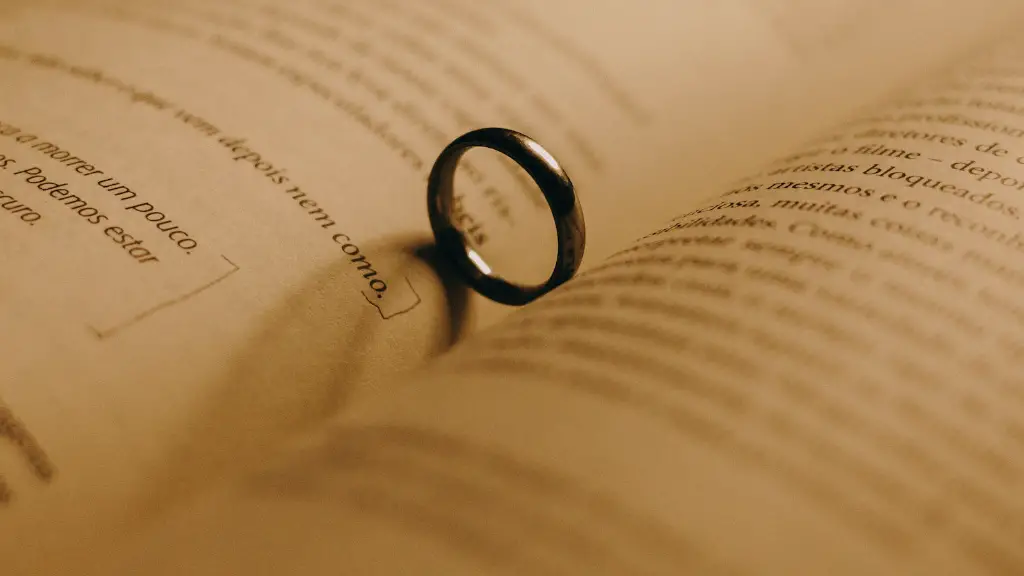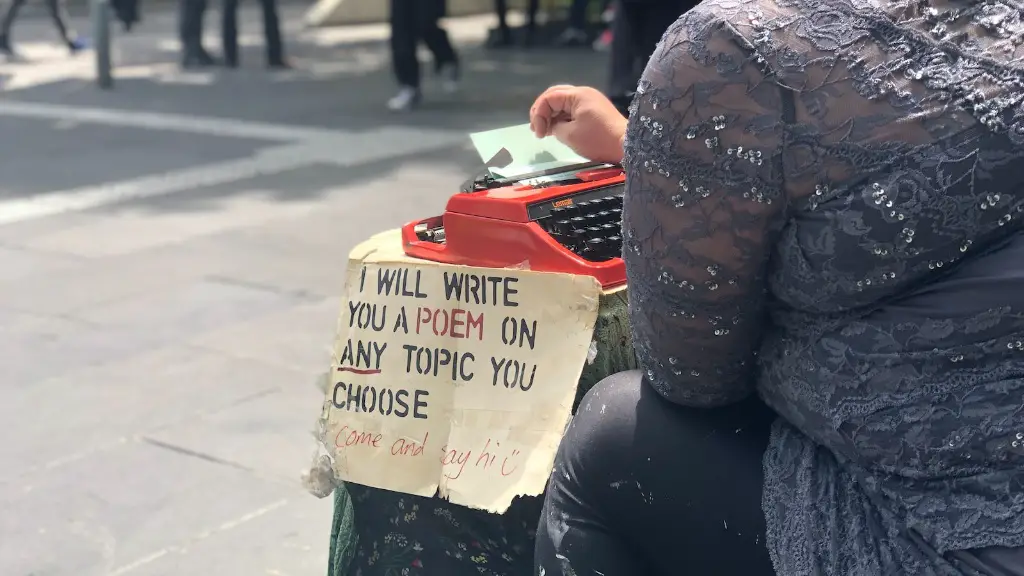Poetry and its use of the foot is an essential element in the construction of a poem’s rhythm and meter. The term foot, in this context, is used to describe a repeating sequence of stressed and unstressed syllables in a poem. It is a fundamental way in which poetry is composed, and this recurring combination of syllables and rhythm is an important aspect to consider when analyzing the effects of poetry.
A foot is a unit of measure for a line in a poem that helps to define its rhythm. The basic unit of a foot is composed of two syllables, with the first being accented and the second being unaccented. A foot can be relatively short in poems with a simple or regular meter, or it can be repeated multiple times in longer, more complex meters. It is important to know the different types of feet in a poem and how they contribute to the poem’s overall rhythm as this can help in understanding the poem’s content and in analyzing the poem.
The most common types of feet in English poetry are the iambic, the anapestic, the dactylic and the trochaic foot. The iambic foot, which is the most common, is composed of a first unstressed syllable followed by a stressed syllable, as in the word “deceive”. The anapestic foot has a pattern of two unstressed syllables followed by one stressed syllable. An example of this would be the word “expand”. A dactylic foot consists of one stressed syllable followed by two unstressed syllables, as in the word “Summer-time”, and a trochaic foot consists of one stressed syllable followed by an unstressed syllable, as in the word “open”.
These common feet are often used in combination with each other to form rhythmic patterns in poems. This makes the poem more expressive, conveying its content in an aesthetically pleasing way and creating an emotional response in the reader. Furthermore, by understanding the use of the foot in a poem, the reader is better able to appreciate the poet’s purpose and interpret the poem’s meaning.
The feet in a poem are a primary measure used by a poet to convey his or her intended meaning. By understanding and recognizing the different feet used in a poem, one can interpret a poet’s words in more detail and gain a better insight into the emotions contained in the poem. Furthermore, understanding the use of the foot in poem can help to better appreciate the complexity of the composition and the skill of the poet.
The Use of Feet in Poetry from Different Cultures
The use of feet in poetry is not limited to English poetry; different cultures have their own poetic feet patterns that are employed in the writing of their own poetic forms. For example, Japanese haiku employs a 5-7-5 on pattern, where the first line of the poem has 5 syllables, the second has 7, and the third has 5. This pattern can help to convey a sense of balance to the poem, as well as creating a variety of images and emotions in the poem.
The use of feet in Afro-Caribbean poetry is also noteworthy. In their poetry, feet are often divided into two main categories; the anacrusis, which begins with an unstressed syllable, and the chorus, which ends with a stressed syllable. Within each of these categories, a variety of different poetic forms can be used to emphasize particular verses or to add additional emotion or feeling to the poem.
The Rhythm of the Poem
The foot is closely linked to the overall rhythm of a poem and is essential in the making of a poem’s particular meter. The rhythm of the poem is closely linked to the poet’s intended emotion. Poems with a more regular rhythm, such as those with iambic feet, often evoke a more somber mood whereas poems with an irregular rhythm, such as those with anapestic feet, can create a more upbeat mood. Understanding how the poet uses feet in a poem can help readers to gain a better understanding of the poem and the way the poet wishes to convey his or her feelings and thoughts.
Stress and Unstress in Poetry
The concept of the foot is closely linked to the idea of stress and unstress in the syllables of words. Stressed syllables are louder and longer and it is through this combination of stressed and unstressed syllables that the rhythm of a poem is created. Knowing how specific words are pronounced in poetry and how each individual syllable is stressed or unstressed can help to activate a poem’s rhythm, which in turn can help to convey a certain emotion or feeling to the reader.
Choosing the Right Foot
When writing poetry, it is important to think about the type of foot that best suits the poem’s content and rhythm. A poem’s content is often enhanced by the type of foot used, and by choosing the right foot, the poet is able to better emphasize the feeling they want to convey and the theme they wish to explore. As such, it is important to consider the type of feet that are used in a poem when analyzing its content and meaning.
The Function of the Foot in Poetry
The foot is an important element of a poem’s overall structure and the use of a particular foot has the potential to influence the interpretation of the poet’s words. By understanding the different types of feet and their function, readers are able to gain a better insight and appreciation of the poem’s meaning, message and rhythm. The foot is a key component in the analysis of a poem, and offers an interesting and revealing way of looking at poetry and its many elements.
Understanding of Theme
The use of foot in poetry aids the reader in their understanding of the poem’s theme. By looking at the foot of a poem, one can gain a better understanding of the overall structure of the poem and can more effectively identify key themes, symbols and metaphors. Through analyzing the poem’s foot and its elements, readers can gain a better understanding of the poet’s intent and the meaning behind the poem.
The Role of the Foot in Conveying Meaning
The use of foot in poetry is an important part of conveying an overall message to readers. By understanding the use of feet in a poem, readers are able to gain an insight into the emotions and feelings expressed by the poet. Poets use their feet to express sadness, joy, anger or excitement, and by understanding the poem’s foot; readers are able to recognize these emotions and to empathize with the poet.
Expressing Emotion
The use of the foot in poetry is fundamental for conveying an emotional response to readers. The poet can use a single foot or multiple feet in a poem in order to emphasize a particular emotion or feeling. The emotional response of a poem can be enhanced through a combination of feet, as well as through the poet’s choice of words and images. By understanding the feet in the poem, readers are able to gain a deeper understanding of the emotional response of a poem.



